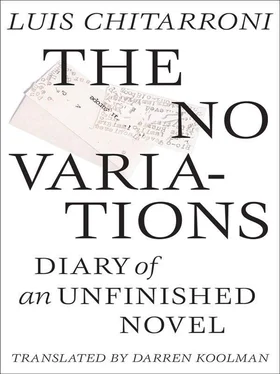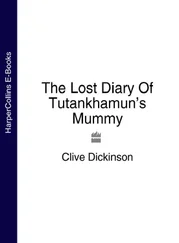The dogma, mysticism
Only Agraphia ’s rite of initiation, the transporting of those orphic vessels of ceremony, demands academic candor; the rest is eschatology: the situations conceived, the roles played, the rigorous sentimentality, are repeated indefinitely. On the threshold, motionless, stands the invunche. The introduction of the go-between ; the divinization of the feticheur ; the tribunal duties of the nine malic molds; the transformation of the Septic Midrash into a gospel ministry [paschal]. Urlihrt’s shamanistic character is revealed in his managerial approach: he responded to every polite request with an act of tyranny. When asked to be merciful on Belisario, he published “Early”; denounced all the conspirators in the lycergical glossary; in advance
The anamorphosis: “the distant far away.” Sister Juana. Baphomet.
From the beginning, Urlihrt wanted to do away with “loose ideas.” His aim: winnow the “spellbinding grains” from the chaotic mass of apathetic, indifferent, dogmatic, “tyrannically unwarranted” chaff …
Irene: Lemprière’s Dictionary …
“I’d like to transform this journal, which is a pandemonium of columns and pillars with no personality or style, into a paradise where calumny is warranted, and pillory is praised” (A purpose met by other contributors, collaborators, deuteragonists).
Reproductive entities
Meaulnes’s grammatical question; to those he knew as “the inventors of modes.” He’s no master of style: all he does is imitate, practicing the modes of kleptographia and kleptolalia
The gratuitous and the fortuitous
Those tireless reproductive entities continue to “breed” catastrophes. And catastrophism, that lovesickness, reproduces itself in the gratuitous sense of a flatus vocis , a mere accidental. So every effect is the product of at least two causes. Thus, the propensity for imitation and plagiarism proceeds first from the masterful work of Francisco Aldecoa Inauda — a contemporary of Rodrigo Caro — Francisco de Herrera, and the Argensola brothers; and second, from the maladroit bungling of Hilarión Curtis [no notable contemporaries]. The ancestors of the first are Urlihrt, Luini, and Lester; of the second, Tregua and Prosan. One name is missing, and that’s the person Lester had insisted be excluded lest he “overshadow the genealogy.” Outside the system is, for example, Sabatani, thought a heretic — a heresiarch in fact, for he was around before all the corruption began.
At the same time, “textual exposure” is what really concerns us. And Agraphia ’s “texts” give the impression of thematic foreclusion : “The Dreadmist,” “Sircular Cymmetry,” “Out of a Greek Gift” … For every decade of tolerance, there are always three or four exceptions we overlook.
These interferences are outside excursions for Agraphia , holidays from their seclusion. Times when nothing is concealed.
Beginning with libel—“Sircular Cymmetry,” which can only be found in two places: the issue of Agraphia in which it appeared and in Uribe’s anthology (“Holy Fridays”) — there is a categorical imperative of considering La Colunnia (Botticelli’s painting in the Uffizi) as a parable. There is a terrible scene showing Apelles being dragged by the hair before a tribunal, consisting of a single judge, for he knows not what crime (the title gives it away), escorted by the Graces — the always beautiful, always gracile Simonetta in her various guises — and a Venus (the Anadyomene, one of the few works the maestro managed to complete). It’s difficult for laypeople today to determine the nature of Apelles’s slander. Lemprière, in his dictionary, offers the following anecdote: “They say he was accused in Egypt of conspiring to assassinate Ptolemy and that he would have been executed had the true conspirator not been found.” Only a few people involved with the journal are aware of the anecdote. Otherwise, more than one would have admired and followed in the steps of Remo.
All the styles are one, and one is the unquantifiable “whatness” of Agraphia : its penchant for idealism and anonymity. The reserves, which together make up this singular subjectivity — defended at all costs by Elena — comprise the list, the partial compendium of cast members of Agraphia , and descriptions of them [using pairs of adjectives] are adapted from descriptions of favorite pianists. Nicasio — or rather his style — is “tentative, proboscidal”; Luini, “dark, erratic”; Tregua, “complex, trivial”; Lester, “exuberant, introspective” … Elena herself, “tender, neurasthenic” …
In the zigzagging genealogy, Nicasio does his best to justify the sententious approach that’s characteristic of the journal (“Ysir is not visibly Ysir, not what God wants but what God is”), for it is the fulfillment of a promise, of a prophecy, a malediction: Nicasio Urlihrt is, in the twentieth century, the cryptographical, the cryptogrammatical incarnation of Hilarión Curtis: the consonants throttling the single vowel.
The number of heretics
And also, finally, the hypochondria, the ills, the diseases of Agraphia— cryptodermia, kleptolalia, cryptophasia, Elena’s migraines and tachycardia, Inés’s asthma, Belisario Tregua’s gout, dyspnea, and partial deafness, Luini’s stammer, Urlihrt’s crustaceous deafness, Zi’s prescription telescopes [28]
Family doctors. An addition?
After many years, and countless investigations, the mystery remains. What was it that was so modern about Agraphia / Alusiva ? Despite its longstanding resistance to signing and dating works (“practices to which it has become inured as one would a chronic hernia,” to quote the first manifesto), the year can often be deduced by examining the many scathing, self-indulgent references (“Early” is the best example): “if what I told you comes to pass, if the Manchurian candidate wins, I’ll either go into exile or kill myself”; “It was better back in the day,” the dernier cri of belated followers of Guyotat and Derrida; the trophies of a previous decade recovered on the beach of a future one like jetsam after a wreck: late eighties, early nineties, difficult times for the journal ( facts, deeds ) … The “actualization” of “The Imitation of an Ounce” had little to do with the story that was published under another title—“Specular Soup”—in issue number (?) [Eiralis: “I don’t remember the story having such a title”]. I think Nora Fo’s original submission was in the late sixties. But there were many changes, including the addition of a tribute to the co-author [dates: the days leading up to Inés’ death is reflected in the children’s timetable in “The Imitation of an Ounce”], so the final submission had to be in the mid-seventies.
Birthday mission
Elena Siesta:
“Sweet Fatherland, fountainhead of chía,
I have carried you away with me for Lent …”
RLV
What do we learn about the author from reading his novel Las Patrias ?
1) That he was born December 15, 1858.
2) That his death was neither by murder nor accident.
3) That he’s of Irish, Spanish, Portuguese, and Jewish descent.
4) That he fell in love with a married woman (whose name isn’t mentioned), and fearing for his life, [was forced] felt he had to go back — exile himself — to Montevideo in 1878.
5) That he never had [didn’t have] to work for a living.
6) That he began writing Las Patrias in 1914 [1904?]
7) That his father was a friend of Juan Crisóstomo Lafinur.
8) That, on various occasions and in many different cities, he met Paul Groussac, Emilio Becher, W. H. Hudson, Hilario Ascasubi, Euclides Da Cunha, Ireneo Funes, Alma-Tadema, The Prince of Faucigny Lucinge, Doctor Parkinson [Sinclair?], Foucauld.
Читать дальше












